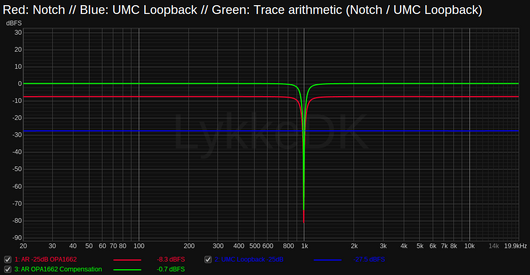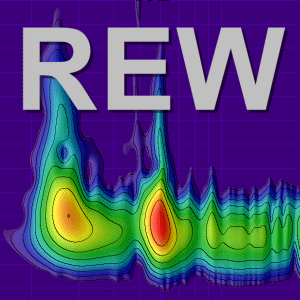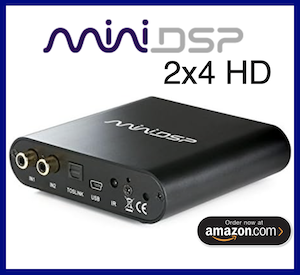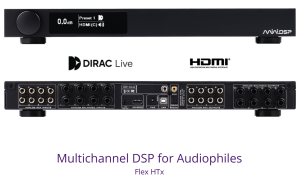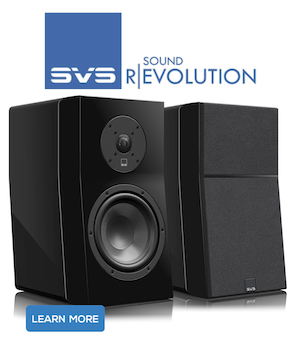jesperlykke
New Member
Thread Starter
- Joined
- May 26, 2020
- Posts
- 30
Hi here.
I'am trying to measure an active 998Hz notch, where the notch deep is around -70dB (very sharp).
If i'am measuring it with the RTA / FFT function in REW with my soundcard, I can tell by the numbers, that there are at least -70dB between 998Hz and 8000Hz(way outside the notch)
So I can for sure tell, that the notch is that -70dB deep.
On the picture below showing two notch's, the green is a -30dB notch which I can measure good (Cosmos APU), the yellow one is this very sharp -70dB notch, which only measures around -26dB during frequency sweep.
- This is nomatter what samplerate, and sweep lenght I use the same deept.
This is a matter of frequency resolution i guess, but I cannot figure out howto measure it more precisely.
- Should I use stepped sine ? - And if; Howto do that correctly?
- The measurement from 10Hz to 22000Hz are supposed to be used as a notch compensation file (loaded as a mic. cal file)
This is for sure a learning experience
Thank's in advance; Jesper.



I'am trying to measure an active 998Hz notch, where the notch deep is around -70dB (very sharp).
If i'am measuring it with the RTA / FFT function in REW with my soundcard, I can tell by the numbers, that there are at least -70dB between 998Hz and 8000Hz(way outside the notch)
So I can for sure tell, that the notch is that -70dB deep.
On the picture below showing two notch's, the green is a -30dB notch which I can measure good (Cosmos APU), the yellow one is this very sharp -70dB notch, which only measures around -26dB during frequency sweep.
- This is nomatter what samplerate, and sweep lenght I use the same deept.
This is a matter of frequency resolution i guess, but I cannot figure out howto measure it more precisely.
- Should I use stepped sine ? - And if; Howto do that correctly?
- The measurement from 10Hz to 22000Hz are supposed to be used as a notch compensation file (loaded as a mic. cal file)
This is for sure a learning experience
Thank's in advance; Jesper.









